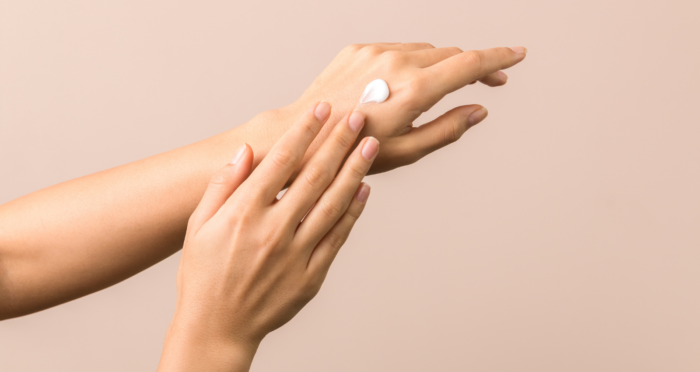Moles are common skin growths that most people have at some point in their lives. While the majority of moles are harmless, you may have had one that looks a little more unique than others, and it’s essential to know when a mole might need further examination by a healthcare professional. Early detection of potential skin issues and changes with your moles can significantly increase the chances of a quick and successful treatment. As primary care providers dedicated to preventive medicine, we are here to help you make informed decisions about your health, and know when you need to come and visit us for a concern! Here’s what to look for in your moles to know when to get them checked.
Understanding Moles
Moles, medically known as nevi, are clusters of pigmented cells that appear on the skin as small, dark brown spots. They can vary in color, shape, and size, and can appear anywhere on the body. Most moles are benign, but some can develop into skin cancer, including melanoma.
The ABCDEs of Mole Examination
- Dermatologists and healthcare providers use the ABCDE guidelines to help identify moles that might be problematic. This simple tool can help you remember what to look for when examining your moles:
- Asymmetry: If you draw a line through the middle of the mole, the two halves should match. If they don’t, it’s a sign that the mole could be atypical.
- Border: Normal moles have smooth, even borders. Watch out for moles with irregular, notched, or scalloped edges.
- Color: Moles should be a single color. Multiple colors, including shades of brown, black, tan, red, white, or blue, can be a warning sign.
- Diameter: Moles larger than 6mm (about the size of a pencil eraser) should be checked, although some melanomas can be smaller.
- Evolving: Any changes in size, shape, color, or elevation of a mole, or new symptoms such as bleeding, itching, or crusting, indicate the need for evaluation.
Additional Warning Signs of Irregular Moles
Apart from the ABCDEs, there are other warning signs that warrant a professional evaluation:
- Soreness or Pain: A mole that becomes sore or painful should be examined.
- Bleeding or Oozing: Moles that bleed or ooze without any apparent cause.
- Scaliness: A mole that becomes scaly, rough, or develops a crust.
- Itching or Tenderness: Persistent itching or tenderness in a mole can be a sign of change.
- New Growths: Any new moles that appear after the age of 30 should be checked.
Who is at Risk for Melanoma?
While anyone can develop melanoma, certain factors can increase the risk:
- Fair Skin: People with fair skin, freckles, red or blond hair, and light eyes are at higher risk.
- Sun Exposure: Excessive exposure to UV radiation from the sun or tanning beds.
- Family History: A family history of melanoma or other skin cancers.
- Personal History: Individuals who have had skin cancer previously are at increased risk.
- Multiple Moles: Having a large number of moles or atypical moles.
When to See a Primary Care Provider for an Irregular Mole
If you notice any of the above signs or have concerns about a mole, it’s crucial to consult your primary care provider. Early detection is vital for successful treatment, especially for melanoma. Your primary care provider can perform an initial examination and, if necessary, refer you to a dermatologist for further evaluation.
What to Expect During a Mole Check
During a mole check, your healthcare provider will:
- Take Your Medical History: Including any personal or family history of skin cancer.
- Perform a Physical Examination: This involves a thorough examination of your skin, including areas not easily visible to you, like the scalp, back, and behind the ears.
- Use Dermatoscopy: A tool called a dermatoscope may be used to examine the mole more closely.
If the mole appears suspicious, a biopsy may be performed. This involves removing a small sample of the mole for laboratory analysis to determine if it is cancerous.
How to Prevent Cancerous Moles
Prevention is always better than cure. Here are some steps you can take to reduce your risk of skin cancer:
- Use Sunscreen: Apply a broad-spectrum sunscreen with an SPF of 30 or higher every day, even on cloudy days.
- Wear Protective Clothing: Hats, sunglasses, and long-sleeved shirts can help protect your skin from UV radiation.
- Avoid Peak Sun Hours: Try to stay out of the sun between 10 a.m. and 4 p.m. when UV rays are strongest.
- Avoid Tanning Beds: These are a significant source of UV radiation and can increase your risk of skin cancer.
- Regular Skin Checks: Perform self-examinations monthly and schedule annual skin checks with your primary care provider.
Knowing when to get a mole checked can be a lifesaver. By keeping an eye on your skin and understanding the warning signs, you can catch potential problems early. If you have any concerns about a mole or notice any changes, don’t hesitate to contact your primary care provider. Remember, early detection is key to successful treatment and maintaining your health.
At Avance Care, we are committed to preventive medicine, helping you stay healthy, and answering all the questions that might pop up when you’re not sure what next step to take. Schedule a visit with us today if you have any concerning moles, and take the first step in protecting yourself against skin cancer! Your health is our priority, and we’re here to care for you like family.




